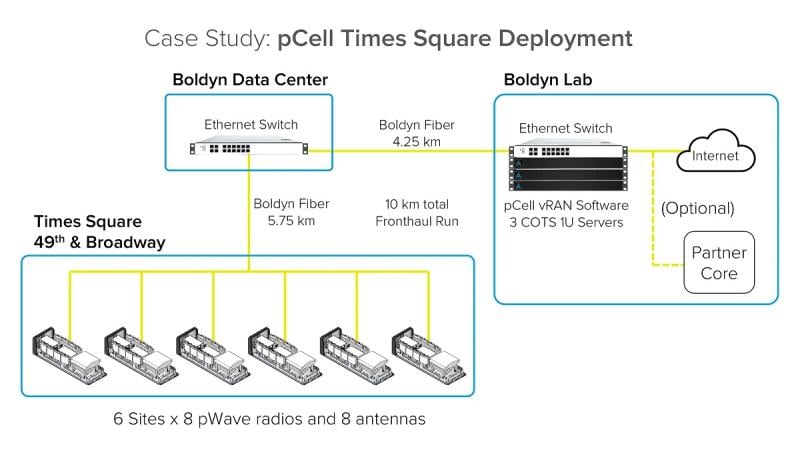-
Artemis partnered with Boldyn Networks in a Times Square proof of concept for pCell
-
Artemis has been “at it” for more than a decade, so it’s a sizable and promising development
-
Artemis and Boldyn used Dish spectrum via authorization by the FCC
Like the song says, if “I can make it here, I can make it anywhere,” and that’s kind of how the founder of Artemis Networks feels after a successful Times Square proof-of-concept for pCell, the technology he spent years developing.
Artemis CEO Steve Perlman said they can now show that the technology has been fully vetted by Boldyn, a reputable infrastructure company that specializes in neutral host solutions and possesses the capability of deploying throughout New York City and beyond.
pCell was announced on February 14, 2014, in New York, so it took about 10 years and one week before they could announce it was fully deployed in Times Square. Testing took place over the course of several months, showing the radios are rugged enough to withstand a New York winter, with “no hitches,” he said.
“We finally checked all the boxes,” Perlman said. “It literally was a decade worth of taking something that people did not think would work at all and finally showing it works beautifully.”
The Times Square test involved 128 Pixel unlocked phones and 20 MHz of 3.5 GHz spectrum borrowed from Dish Network, which agreed to let Artemis and Boldyn use it under a Special Temporary Authorization (STA) granted by the FCC. Artemis’ technology is “frequency agile,” Perlman said. The test delivered speeds of 700 Mbps.
The logistics are notable given the location. They stacked previously used Pixel 5 phones on tripods and hired people to stand next to them to essentially guard them and prevent them from being stolen.
The Artemis pCell vRAN consists of six cell-free radio head sites connected through fiber to three servers in a Boldyn edge data center. It took Boldyn less than one hour to install each Artemis radio head site, including connectivity to Boldyn’s NYC fiber backbone network.

Boldyn Networks combined six companies under one name last year: BAI Communications, Mobilitie, Transit Wireless, ZenFi Networks, Signal Point Systems and Vilicom. It has access to the type of infrastructure in New York City that would allow for a broader deployment.
Artemis is the vendor in this situation and Perlman said Boldyn is talking with potential private network customers and mobile operators. The technology is neutral host, so it is designed to work with any mobile carrier.
Do we need another ‘G’?
With Mobile World Congress 2024 in Barcelona next week, people are going to be talking about network outages and all kinds of technologies, including 6G.
Besides complaints that 5G didn’t live up to the hype, it’s still too early to know what 6G is going to be. But Perlman suggests that the industry wouldn’t need 6G if it were to use 4G and 5G differently. “That is what we’ve done,” he said.
Going from 3G to 4G was necessary because it brought everything from circuit-switched to an IP-based world. “4G was a huge step forward. 5G was a small polish on top of 4G… but was it really necessary for the whole industry to adopt a new standard? Could they have just sort of upgraded 4G? That was a question that we rose seven years ago,” he said.
pCell uses the interference inherent in cellular technology to its advantage. The echoes that trigger problems in cellular systems help pCell work better because the more interfering radio waves, the more powerful they are. “Everything that you normally think of a bad thing for cellular is actually a good thing for pCell,” he said. See this video for more on the technology.
Follow our coverage of Mobile World Congress 2024 in our dedicated channel here.

